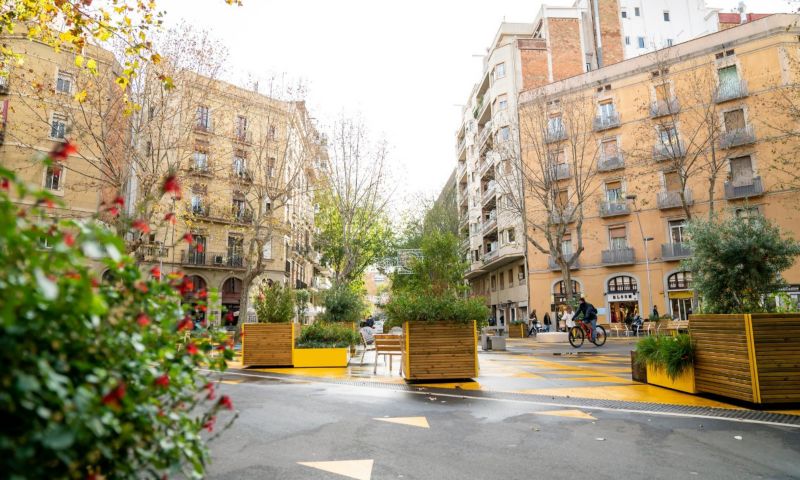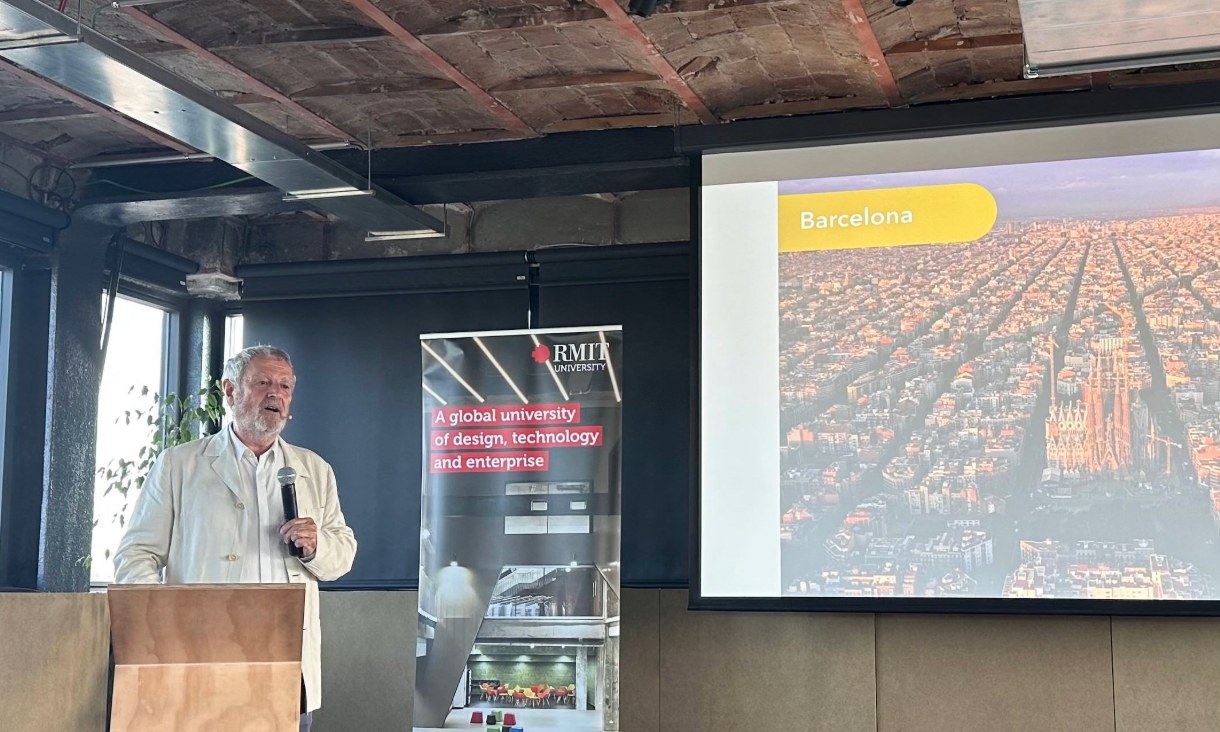Barcelona's internationally renowned superblock model is aimed at improving the sustainability and liveability of the city for people, place and planet.
International urban ecologist and placemaking expert Salvador Rueda Palenzuela, one of the pioneers of the Barcelona Superblocks, was the keynote speaker at an event held by RMIT Europe during Barcelona's Architectures Weeks.
Rueda said that we need to change our cities quickly and urgently due to the risks posed by pollution to both human and planetary health.
"To change our cities, we must change the urban mobility model," he said.
Rueda was joined at the event by RMIT's Professor Wendy Steele, Professor Mark Jaques and Professor Marco Amati and Barcelona-based architects Lucía Millet from Cierto Estudio and Mercè Lorente Gras from Batlleiroig.

What is a superblock?
Superblocks or superilles in Catalan are an urban sustainability design approach pioneered in Barcelona to transform city places, spaces and mobility.
Superblocks are internationally recognised for design that prioritises people over cars, deepening community participation, engagement and cohesion.
In his keynote speech, Salvador Rueda Palenzuela said that the superblock model, which reduces the number of vehicles in an area at least four blocks wide and re-routes traffic to the perimeter of the block to, aims to:
- Improve the sustainability and liveability of the city for people, place and planet, and
- Reduce the negative impacts or disfunctions of the current model in which excessive greenhouse gas emissions, increased urban heat and excess sound and air pollution collectively pose risks to health, nature and the atmosphere.
In Barcelona, changing the bus routes to the new orthogonal network with horizontal, diagonal and vertical routes has led to higher bus use, halved travel times for 70% of the population and helped to discourage car use.
Since the introduction of this model in 2012, car traffic in Barcelona has reduced by 25%, explained Rueda.
"Superblocks change the use of public space; because cars can't drive a direct route through the centre and must drive slowly, kids can play in the streets," Rueda said.
Urban greening projects such as lining the streets inside the superblock with trees further contribute to a safer, healthier space by improving air quality, creating shade which has a cooling effect, and aiding in the restoration of biodiversity.
Rueda also highlighted that extending the superblock model would lower health risks associated with pollution, as well as reduce the number of motor accidents inside superblocks.
The superblock model has been trialled in three areas of Barcelona, however Rueda emphasised that applying the model across the whole city would be a worthy investment and to the benefit of the Barcelona community.

Climate change: one problem, multiple solutions
During the event, the panel also discussed other types of tactical urbanism.
Panellist Lucía Millet worked on the 'New Green Axes Model' for the urban plan 'Superilla Barcelona' and the design and reurbanisation of its main green axis: Consell de Cent, a street in Barcelona's Eixample district.
Green axes seek to reverse the priority of mobility so that the protagonist of the street becomes the pedestrian instead of the motorised vehicle.
Space is gained for everyday city activities and also reallocated for the planting of vegetation and trees to increase biodiversity.
The squares formed at the intersections of green streets become green lungs where people can socialise, carry out leisure activities and play.
Millet explained that the Green Axes Model proposes to transform one of every four vertical and horizontal streets into green streets with inverted priority, thereby generating a grid of green streets on top of the existing city framework.
This model is precisely the inverted version of the original Superblocks model, where three out of every four vertical and horizontal streets are transformed.
Professor Marco Amati from RMIT's School of Global, Urban and Social Studies raised some of the practical challenges to this type of urban transformation, such as the presence of trees both underground and overground.
Since essential services such as pipes and electric lines run under the footpath, there are limited options for planting more trees here, whereas roads and parking areas have comparatively fewer service lines running beneath them.
"There is a relationship between reducing the space dedicated to mobility and achieving a greener city," said Amati.
He suggested that removing car parking or slowing down cars would increase the available public space for tree planting.
Mercè Lorente Gras, an architect in the landscape department of Batlleiroig, noted that "all of us agree on prioritising people over cars, and there are many ways of doing it - as designers we have to be innovative."






